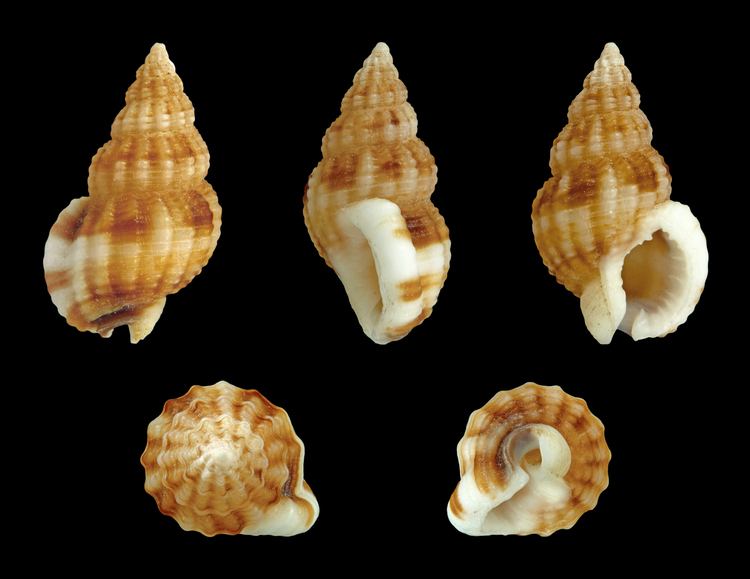Superfamily Buccinoidea Subfamily Nassariinae Scientific name Nassarius incrassatus Rank Species | ||
 | ||
Similar Tritia neritea, Vexillum ebenus, Pisania striata, Muricopsis cristata, Galeodea rugosa | ||
Tritia incrassata, common name the thick-lipped dogwhelk, is a species of sea snail, a marine gastropod mollusk in the family Nassariidae, the Nassa mud snails or dog whelks.
Contents
Description
The shell up to 15 mm high with rather high spire and a rounded body whorl. The protoconch is small, distinctly cyrtoconoid with 2.5 smooth whorls. The teleoconch contains 6-7 convex whorls, with a sculpture of regular spiral cords, broader than the interspaces. Its axial folds become distinctly flexuous on the body whorl. The aperture is bordered externally with a strong varix forming a rim, normally unique - not repeated at the earlier growth stages on the spire. The inner side of the outer lip bears ca. 10 denticles, elongated in the spiral direction. The parietal edge of the aperture forms a very thin, appressed callus, with a distinct adapical denticle, continued into a thicker columellar callus with a slightly raised edge. The base of the body whorl has a groove delimiting the outer part of the siphonal canal.
The colour of the shell is extremely variable, with distinct combinations of brown, black, yellowish or orange hues, most often with a paler band on abapical part of spire whorls and periphery of body whorls. Elsewhere it is arranged in bands or in spiral series of blotches, or uniform. The aperture is white with a highly diagnostic black blotch inside the siphonal canal.
Distribution
This species occurs in European waters, throughout the Mediterranean Sea and the Eastern Atlantic Ocean (from Norway to southern Morocco, also off the Canary Is. and the Azores) at depths between the shoreline to ca. 100 m.
